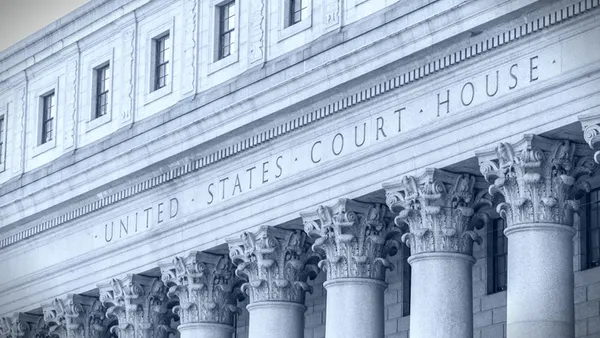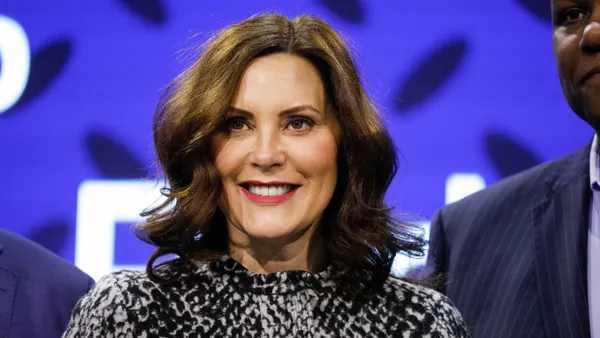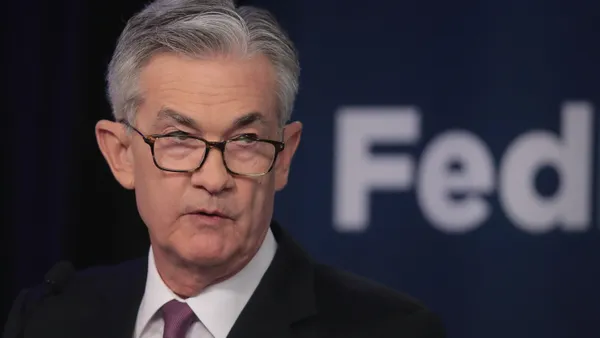Dive Brief:
- The U.S. economy next year will probably expand 2.1%, chugging forward with sustained growth above its expected long-term trend, according to economists surveyed by Wolters Kluwer.
- Economists at companies ranging from Goldman Sachs to Ford Motor and KPMG to Wells Fargo marked up their growth estimates by 0.1 percentage point and see only a 27% probability of recession in the next 12 months, Wolters Kluwer said.
- “While the consensus still looks for a slowdown in the quarters just ahead, it looks for a more modest slowdown than previously expected,” Haver Analytics Senior Economist Sandy Batten said in a statement in the report. “It no longer anticipates any quarter in which read gross domestic product growth is below trend over the entire forecast horizon.”
Dive Insight:
Federal Reserve officials estimate the economy will annually grow 1.8% over the long term, according to their median projection released in September.
Defying forecasts of recession, GDP grew at annual rates of 1.4% in Q1, 3% in Q2 and 2.8% in Q3, according to the Bureau of Economic Analysis. GDP will probably expand at a 2.5% annual rate during the fourth quarter, according to the Atlanta Fed.
Economists predict that the U.S. economy will end the year with 2.7% GDP growth, Wolters Kluwer said, noting that in January economists forecast just a 1.6% expansion for the year.
“The recent performance of our economy has been remarkably good, by far the best of any major economy in the world,” Chair Jerome Powell said Thursday.
“Growth in consumer spending has remained strong, supported by increases in disposable income and solid household balance sheets,” he said in a speech in Dallas. “Business investment in equipment and intangibles has accelerated over the past year.”
Also, “the labor market remains in solid condition,” Powell said just hours after the Labor Department reported that applications for unemployment benefits fell by 4,000 to 217,000 during the week ended Nov. 9, less than expected.
Powell expressed confidence that the central bank can sustain GDP growth, ensure a healthy labor market and slow inflation to its 2% target with “an appropriate recalibration” of monetary policy.
Policymakers last week trimmed the benchmark interest rate by a quarter percentage point to a range between 4.5% and 4.75%, citing a softening labor market and progress in slowing inflation toward their target.
Central bank officials, based on the median of their projections at their meeting in September, forecast that they will trim the federal funds rate to 4.4% by December and to 3.4% by the end of next year.
Yet policy is not on a “preset” path, Powell said. “In considering additional adjustments to the target range for the federal funds rate, we will carefully assess incoming data, the evolving outlook, and the balance of risks.”
Also, any additional easing is not urgent, he said.
“The economy is not sending any signals that we need to be in a hurry to lower rates,” Powell said. “The strength we are currently seeing in the economy gives us the ability to approach our decisions carefully.”













